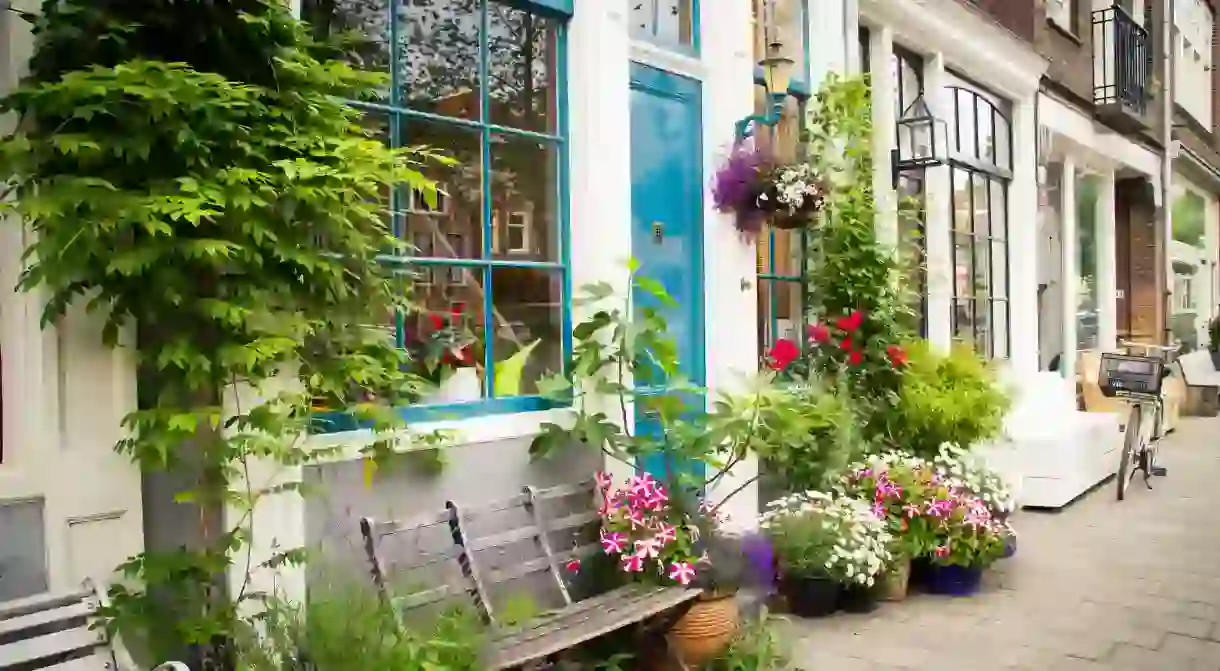The Rebellious Heritage of Amsterdam's Jordaan Neighbourhood

Amsterdam’s Jordaan district, a short distance from the city’s central railway station, still has the reputation of being a working-class neighbourhood. Yet in recent years it has experienced significant gentrification and become a desirable place to live.
Look closely and you can still see long-established, family-owned stores that began when the Jordaan district was known for its rebellious spirit.

The Jordaan lies west of the Prinsengracht, the canal overlooked by the Anne Frank House. From Amsterdam’s central station it’s less than a 15-minute walk to the Brouwersgracht canal, which demarcates the northern edge of the district.
From 1656 to 1669 Rembrandt van Rijn, the celebrated artist, lived in the Jordaan at a house on the Rozengracht. Perhaps he popped into Het Papeneiland, a traditional café-bar that opened on the corner of the Prinsengracht and Brouwersgracht in 1642.
Many of the district’s residents during the 17th century were Huguenots – Protestant immigrants who fled France to escape persecution. The Huguenots, it’s said, referred to the district in which they lived as le jardin, meaning ‘the garden’, because streets were named after flowers and plants. Dutch speakers who couldn’t pronounce French knew it as the ‘Jordaan’. The name stuck.

Until the 1960s the Jordaan was regarded as a poor quarter of Amsterdam. A generation ago the district’s inexpensive, relatively centrally located housing resulted in its gentrification. It’s now a desirable residential neighbourhood, but remains on the periphery of tourism itineraries compared to streets just a few minutes away.
“In the 19th century it was a very rebellious neighbourhood. There were a lot of communists, anarchists and socialists living here. Even when they were fighting with each other, when the police showed up they stopped and started fighting against the police,” explains Rene Mastenbroek, a freelance guide leading a group of a dozen foreign travellers on Eating Europe’s food tour of the Jordaan.

Standing on the pavement with his back to a shop window he gestures along Lindengracht. On the broad, pedestrianised street people meander between market stalls with tarpaulin canopies selling wares such as cheeses, fresh fish and clothing.
The Dutch word gracht means ‘canal’. “They closed this canal in the 19th century for hygienic reasons,” explains Rene, “and also because of a strange game that was played here. It was called eel pulling.”
Minutes ago, the people participating in the tour were tasting samples at a family-run butcher’s shop, T.F.M. Louman, a business that opened in 1890. They give their guide a blank stare. Maybe they suspect that they misheard or that Rene’s excellent command of English suffered from a momentary blip?
“Eel pulling,” he repeats while nodding. “Never heard of it? It never made it to the Olympic Games,” he jokes.

In front of his chest Rene holds a copy of an old black and white photograph. It shows a man standing in a rowing boat and reaching up for an eel that’s hanging from a rope suspended over canal. Spectators pack the streets in front of tall gabled buildings. It’s easy to imagine raucous cheering as the wooden boat is rowed forward and he grabs at the creature.
“Every block, every bar had its own team,” says Rene about the sport. The eel, which participants attempted to pull from the rope, was alive. He describes how such events were accompanied by drinking, singing and, usually, fighting.
Eel pulling, known in Dutch as palingktrekken, was banned because of its cruelty and the civil disorder associated with it. Nonetheless, in July 1886 the people of the Jordaan gathered to participate or watch the popular blood sport. When the police arrived to suppress it, fighting started.
Barricades were erected. Rioting began. Cobbles were torn from the streets and used as missiles against the police, who drew swords. The army was called in. Live ammunition was fired. Twenty-six people were killed and more than 100 were injured.
Covering the Lindengracht canal put an end to major eel pulling gatherings. It was not, however, Amsterdam’s last deadly riot.
The Netherlands remained neutral during World War I but suffered from food shortages. During the summer of 1917 a worker supplied information that a shipment of potatoes was passing through the city. Women from the Jordaan district went to liberate the potatoes, drawing a heavy-handed reaction from the police. Tensions and unrest eventually led to fighting and rioting. Again, the firing of live rounds resulted in civilian casualties.

More followed. Much of the Western world’s population suffered during the 1930s because of the economic downturn of the Great Depression. In response to the Dutch government cutting the unemployment benefit in 1934, women in the Jordaan organised a rent strike. Landlords threatened evictions. People gathered in solidarity and tensions flared. Six people were killed and many more were injured as rioting was brutally suppressed.
The riots have become part of the folklore of Amsterdam and the Netherlands. Reputations are, of course, notoriously difficult to shake. Consequently, the Jordaan district still has a rebellious reputation, despite it now being a desirable place to live.













